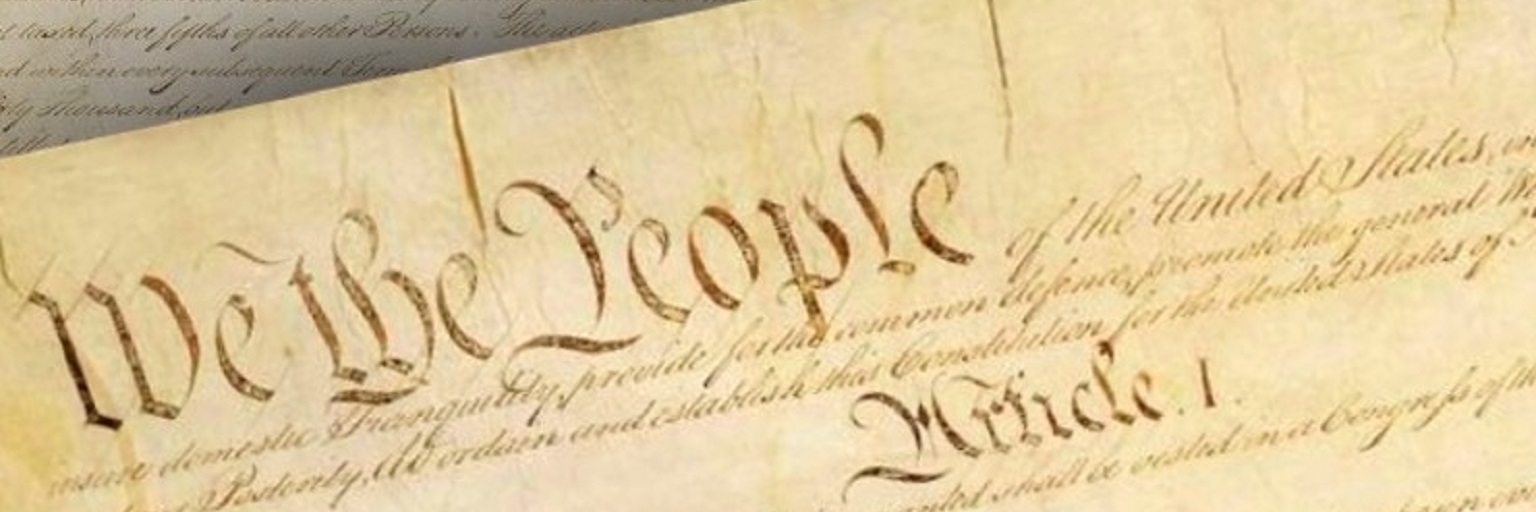We the People of the United States, in Order to form a more perfect Union, establish Justice, insure domestic Tranquility, provide for the common defence, promote the general Welfare, and secure the Blessings of Liberty to ourselves and our Posterity, do ordain and establish this Constitution for the United States of America. (full text)
New Document, New Government
In 1787, the Constitutional Convention gathered to revise the weak Articles of Confederation, but ended up replacing it with a new Constitution. The framers of the Constitution wanted the nation to have a stronger national government, with powers to pass laws, regulate commerce, print/coin money, engage in international trade as one nation, and settle disputes among the states. The Constitution created three branches of Government: a bi-cameral legislature, an executive official (not a monarch), and a judiciary, where all three had separate powers, which served as “checks” on the other branches to ensure that no one branch had too much power or could abuse its power.
Federalists vs. Anti-Federalists
In 1788, there was a clash over ratification of the Constitution. The Federalists supported ratification and argued that a strong national government was necessary for the United States to function as an independent nation, while the Anti-Federalists feared that a strong national government would trample the states and become despotic like Great Britain and the Constitution did not include protection of the states or of the individual liberties of the people. Alexander Hamilton, John Jay, and James Madison published 85 essays in The Federalist, referred to as the Federalist Papers, urging support for the ratification of the Constitution, while the Anti-Federalists published a series of essays under pseudonyms such as “Brutus,” “Cato,” and the “Federal Farmer,” expressing their concerns about creating a strong central government and no Bill of Rights. A compromise was struck between the two sides of the debate when Massachusetts agreed to ratify the Constitution if the Federalists would agree to add a Bill of Rights.
McCulloch v. Maryland (1819)
The Supreme Court held that under the “necessary and proper” clause (Article I, Sec. 8) in the Constitution, Congress had the power to incorporate the national bank and under the Supremacy Clause (Article VI, cl. 2) the states could not interfere with that Constitutional power. Learn More
Worcester v. Georgia (1832)
The Supreme Court held that Georgia did not have the power to regulate relations with the Cherokee nation, because the Cherokee nation was a sovereign nation and under the Commerce Clause (Article I, Sec. 8, cl. 3) in the Constitution, Congress holds the power to regulate commerce with with foreign Nations, Indian Tribes, and among the states. Learn More
- Constitution Annotated, produced by the Congressional Research Service
- “A More Perfect Union: The Creation of the U.S. Constitution,” National Archives’ America’s Founding Documents
- Pauline Maier, Ratification: The People Debate the Constitution, 1787-1788 (2010)
“The Constitutional Convention of 1787,” includes three lesson plans on the Convention, posted by by NEH-EDSITEment
Key Constitutional Concepts from the Annenberg Classroom. This video discusses the creation of the Constitution and highlights the powers and checks on the branches of government and protections of the individual. Here is a handout for teachers, including a lesson plan, to use with the video.

